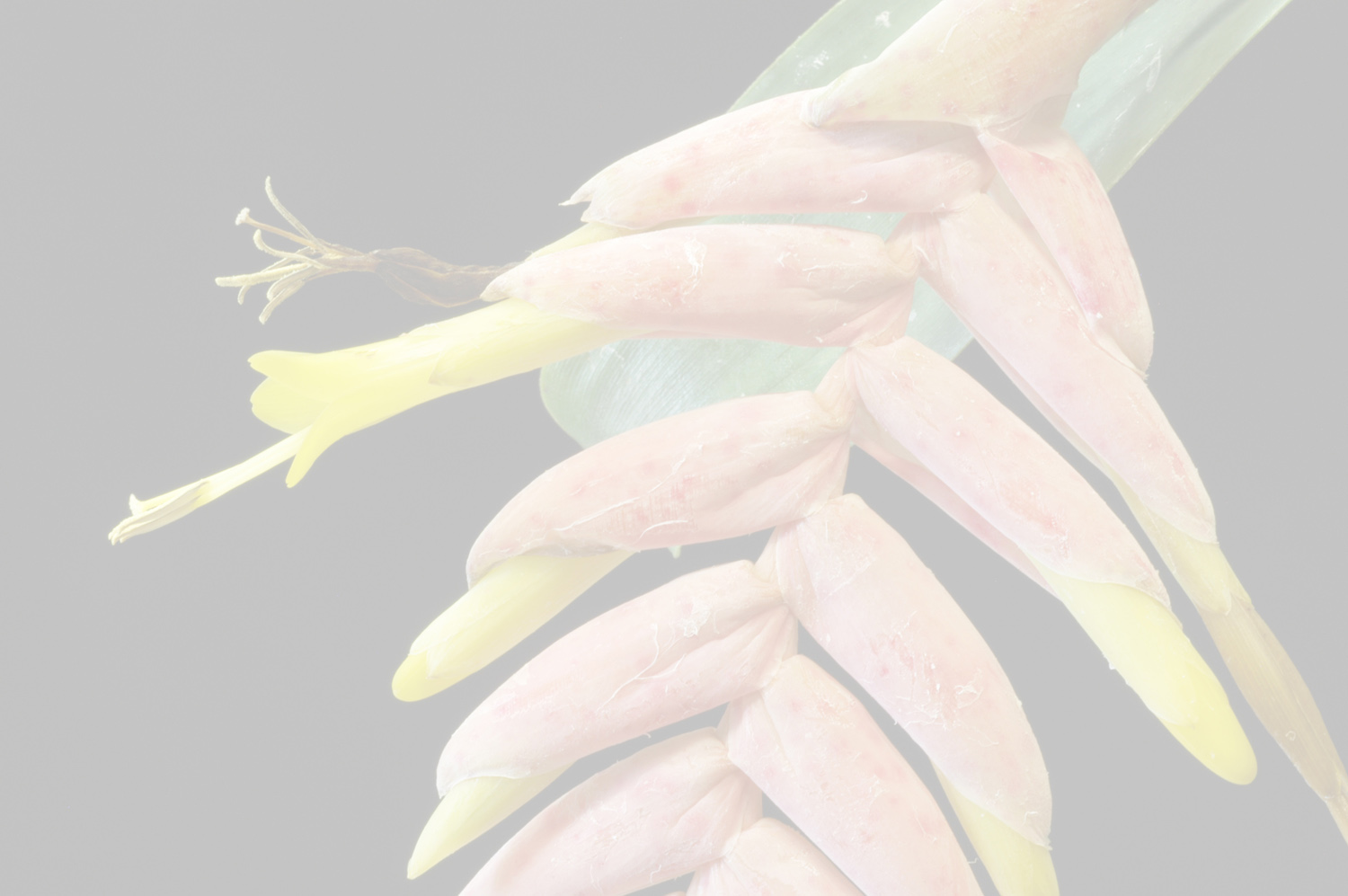Vriesea flava A.F.Costa, H.Luther & M.G.L.Wanderley
Taxonomic Change:
- For years specimens in this species group were misidentified in herbaria worldwide as
Vriesea (x) morreniana hortus ex E. Morren, based on Smith and Downs’s (1977) —See Costa et al. 2004 p. 36
Literature references:
Comments:
- Vriesea flava occurs in the Atlantic Forest about 800m above sea level, in Sao Paulo, Parana, and Santa Catarina States, Brazil. It is an epiphyte especially on the trunks and main branches of trees. Vriesea paraibica, a red bracteate species, occurs on the same altitudinal range on the Serra do Mar, between northeastern Sao Paulo State and Rio de Janeiro State (Table 1). Fieldwork and herbarium data (HB, HBR, MBM, R, RB, SP, UPCB) indicate that sympatric populations with red and yellow floral bracts are not known. Within the yellow bracteate species, V. eltoniana E. Pereira is also related, but differs from V. flava in the longer leaves, the red-purple rachis, the three sepals bearing a dorsal keel, and the petals yellow with dull green tips. Vriesea eltoniana has a restricted geographical distribution, occurring only in the coastal semi-deciduous forests in Rio de Janeiro State. Vriesea flava is also closely related to V. maxoniana (L. B. Smith) L. B. Smith from Argentina and Bolivia and V. laxa Mez from Venezuela. These two last species also belong to the same complex and are similar in appearance to V. flava, and could be interpreted as a single species. However, despite this relatively common circum-Amazonian geographic distributional pattern among several angiosperm species (Granville, 1992), the features shown in Table 1 were considered relevant to recognize V.flava as a new species.
The morphometric analysis and taxonomic treatment of the Vriesea paraibica complex will be presented in two forthcoming papers.
Notes
The genus Vriesea Lindley (Bromeliaceae) comprises about 230 species distributed in two sections, Vriesea and Xiphion (E. Morren) E. Morren (Smith & Downs, 1977; Luther & Sieff, 1994, 1997a, 1997b; Luther, 2001; Grant, 1995a, 1995b). Section Vriesea includes a group of species closely related to V. paraibica Wawra, which are distributed along the Atlantic Forest of southeastern and southern Brazil. For years specimens in this species group were misidentified in herbaria worldwide as V. X morreniana hortus ex E. Morren, based on Smith and Downs's (1977) interpretation. However, this taxon is an artificial hybrid between V. psittacina (Hooker) Lindley and V. carinata Wawra (Morren, 1882) and does not exist in nature (Costa, 1997).
The populations of the Vriesea paraibica complex were studied as part of the doctoral project of the first author, and the results of morphometric analysis indicate that two major groups form by the color and length of the floral bracts (Costa, 2002). Plants with entirely yellow bracts, yellow, orange, or green-tinged rachises, and lemon-yellow petals occur between Sao Paulo and Santa Catarina in Brazil. Reitz (1983) treated this group as V. X morreniana, but no longer considered it a natural hybrid due to its abundant occurrence and dispersal by seeds in nature. Though he kept the name, he did not adopt the broader concept, which Smith and Downs (1977) suggested for the taxon. This species is herein proposed as new, based on its singular combination of characters. —See Novon
- Geographic distribution and habitat: Vriesea flava occurs in dense ombrophile forests, from 500–800 m a.s.l., in the Serra do Mar between the city of São Paulo and the state of Santa Catarina (Fig. 7). The species is an epiphyte of the forest interior, living on the trunks and main branches of trees. Field observations indicate that the populations are dense. Reitz (1983) treated the species as V. morreniana Hort. ex E.Morr., following the interpretation of Smith & Downs (1977), at least with respect to the name and geographical range. However, he did not consider it a hybrid, but rather a species intermediate between V. psittacina var. decolor and V. carinata, because of its wide distribution and abundance in Santa Catarina and Paraná. The description and examined material furnished by the author conform with V. flava, not including the specimens with greentipped red floral bracts and recurved petals that occur in the Serra da Bocaina, Mantiqueira and Serra dos Órgãos (V. interrogatoria and V. paraibica). The material analysed by Reitz (1983) was reviewed and confirmed as belonging to V. flava. —See Costa et al. 2009

